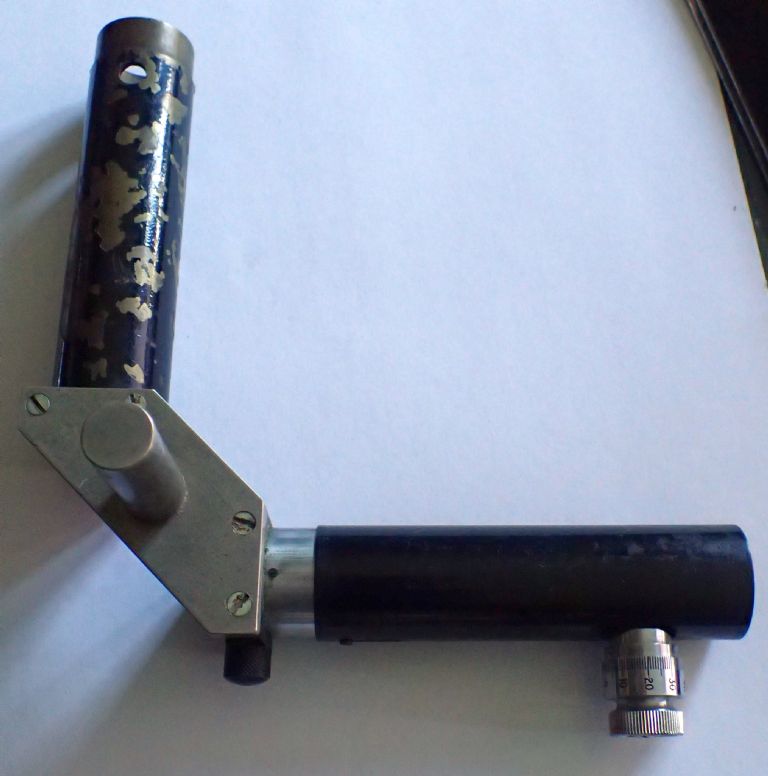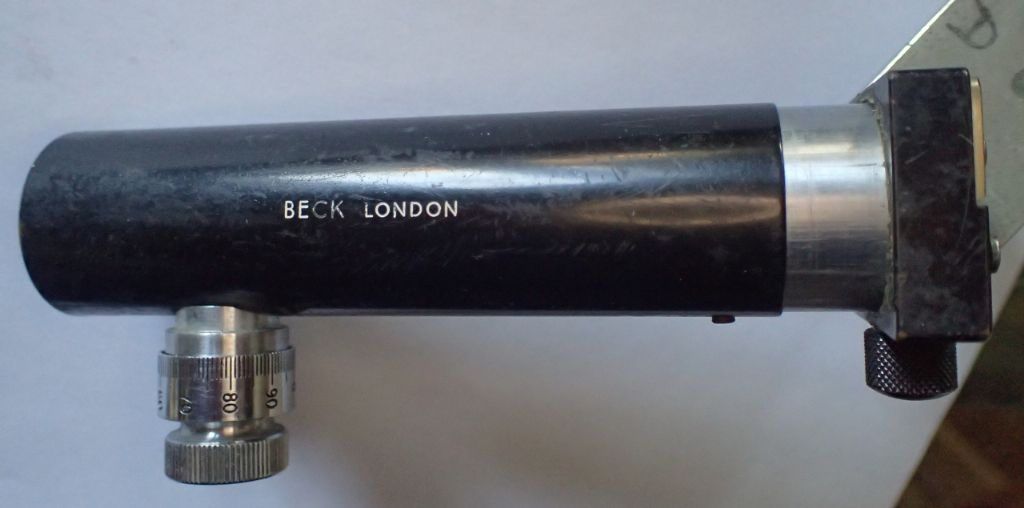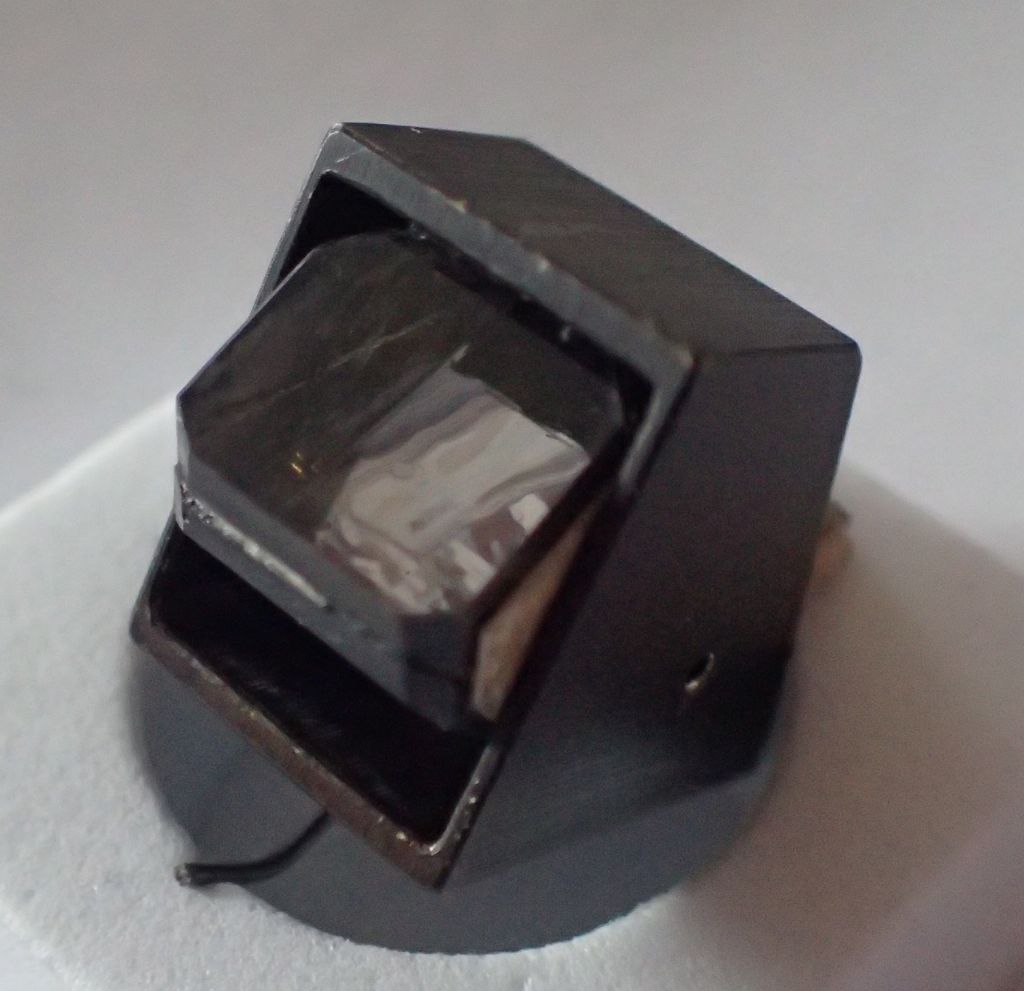I acquired this thing, alongside a nice boxed travelling microscope, as part of an auction lot. The only connection I can see between the two is that the support pin for the microscope is the same diameter as the pin on this gadget.

Online research tells me that the bottom piece is a Beck prism spectroscope.

The other piece is clearly supposed to contain a light source and has a lens in the end to collimate the light. It does seem to work, as shining a bright light down the collimator tube and reflecting it through the slit makes a spectrum visible at the eye tube.
However the spectroscope is missing its eyepiece, and although the eye tube is 23.2mm in diameter, which seems fairly standard, there is a locating key on one side that will stop a circular eyepiece from entering.

Which raises a couple of queries which I am hoping the optics experts might be able to help with.
Does anyone know what focal length (or magnification) the eyepiece would have been – or have a method that would allow me to measure what it should be? I can't see any examples of eyepieces online with a flat on one side so I suspect I will have to get a lens and make a mount.
All the Beck spectrometers I can find online seem to be stand alone devices. Has anyone got any pointers to a picture that might show me the sort of specimen holding stage that this would have originally fitted?
Thanks in advance for any ideas.
 Michael Gilligan.
Michael Gilligan.







